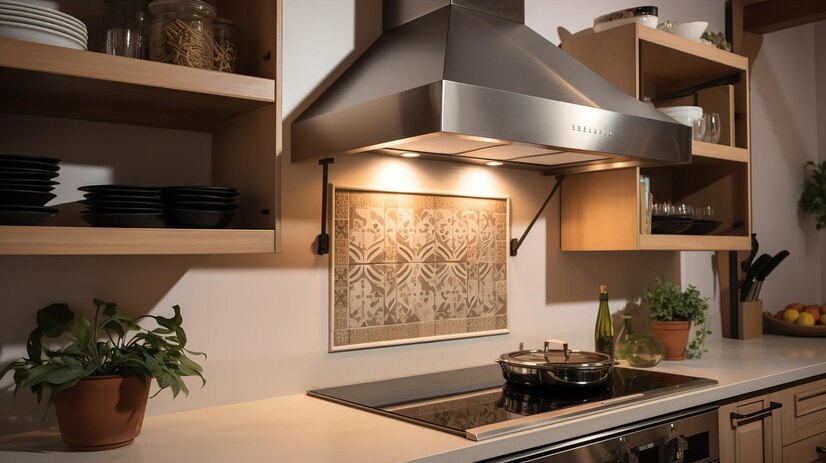Illumination is often the unsung hero in our home design narratives. Whether we’re prepping a sumptuous meal or enjoying an intimate conversation over a cup of coffee, the right kitchen lighting not only facilitates the task at hand but also enhances the overall ambiance. This in-depth exploration of kitchen sink lighting ideas is tailored for interior designers and home decor enthusiasts seeking to infuse their kitchen spaces with sophistication and functionality.
Understanding the Kitchen Sink as a Focal Point

In kitchen design, the sink area serves as the nucleus of culinary activity. Beyond its practical function, it’s where style meets substance, where form meets function, and where visual focus is drawn. Any discussion on kitchen sink lighting must therefore begin with recognizing this important anchor point.
The Impact of Proper Lighting
Properly lit sink areas contribute to a more efficient and enjoyable kitchen experience. Task lighting, for instance, becomes crucial when washing dishes or chopping vegetables. Meanwhile, ambient and accent lighting can elevate the aesthetics of your space, especially for those ambient evenings of entertaining.
Balancing Form and Function
A balance between aesthetics and functionality is key. Lighting fixtures should blend seamlessly into the overall design while also providing the right level of illumination for varied tasks.
Kitchen Sink Lighting Ideas for a Brilliant Space

In the heart of every home, the kitchen is a place of warmth, nourishment, and, often, family gatherings. Over the years, the purpose of the kitchen has evolved, transcending mere functionality to become a vital part of the home’s design and aesthetic. Today, we’re shining the spotlight on a crucial aspect of kitchen design that often goes unnoticed: kitchen sink lighting. This seemingly minor detail can play a significant role in enhancing the beauty, functionality, and mood of your kitchen space.
The perfect lighting over your kitchen sink is like that finishing touch to a well-made dish – it’s something you can’t do without. It’s about combining practicality with style, illuminating your chores while adding a unique charm to your culinary sanctuary. Whether you’re gearing up for a major kitchen renovation or just looking to make a few upgrades, we’ve curated a list of diverse lighting concepts to transform your kitchen sink area into the celestial center of your home’s energy.
Understanding the Basics of Kitchen Sink Lighting
Before you get dazzled by the array of design options, it’s essential to understand the rudimentary principles that govern lighting your kitchen sink. Good lighting in this area should include task, ambient, and accent lighting. Task lighting is the most crucial as it provides direct illumination for specific activities, such as washing dishes, food preparation, or reading recipes.
Ambient lighting, on the other hand, sets the overall mood of the kitchen. This is usually in the form of ceiling-mounted or pendant lights that spread a soft glow throughout the room. Finally, accent lighting draws attention to a particular area or item, like a decorative backsplash. A balanced use of these three types of lighting can transform mundane tasks into enjoyable moments.
Revolutionary Kitchen Sink Lighting Ideas

Here, we will explore various lighting fixtures and configurations that are not only functional but also add character to your kitchen.
1. Pendant Perfection
Pendant lights over the kitchen sink have a way of adding an element of finesse to the space. They come in a variety of styles and sizes, from classic single-bulb pendants to multi-light fixtures that can be as architectural as they are illuminating. For a modern kitchen, a cluster of glass pendants can be a touch of sophistication, while a trio of copper dome pendants may resonate with a more traditional design.
2. Under-Cabinet Elegance
Under-cabinet lights are a go-to solution for providing that much-needed task lighting without cluttering the area. These fixtures are discreet yet powerful, often using LED technology for energy efficiency. They also work as accent lights, highlighting the beauty of your backsplash or adding a cozy alcove effect to your sink area. Consider puck lights for focused beams or light strips for a more general illumination.
3. Recessed Lighting Magic
Recessed or can lights are versatile and can be tailored to suit the specific needs of your kitchen. When placed strategically, they can provide uniform lighting across the entire sink area. For a more intimate and stylish ambiance, choose a few recessed lights and space them according to your kitchen’s size and layout, preventing any dark spots around the sink.
4. Chandelier Charisma
While it may seem unconventional, a small chandelier can be the perfect luxury accent for your kitchen sink. It infuses a sense of grandeur and opulence, especially in a larger kitchen. Miniaturized or lantern-style chandeliers with multiple bulbs can provide abundant light and turn your kitchen sink into a focal point of your home’s design.
5. Task Lighting with a Twist: Swing Arm Lamps
If you’re looking for a lighting option that’s adjustable and doesn’t require hardwiring, swing arm lamps are an excellent choice. These lamps mount to the wall and can be moved to illuminate the sink or pushed out of the way when not in use. They are also a fantastic space-saving solution for smaller kitchens where pendant or chandelier lighting may not be practical.
Integrating Your Sink Lighting with your Kitchen Style

Choosing the right light is just half the battle; integrating it with your kitchen’s design ensures a harmonious look that uplifts the entire space.
1. Honing Your Material Palette
Match the finish of your lighting fixtures with the existing hardware in your kitchen, such as cabinet knobs, faucets, and appliances. This creates a sense of unity and cohesion among the elements.
2. Size and Proportion
Pay attention to the scale of the lighting in relation to the size of your sink and the surrounding area. A small pendant might get lost over a large, double-basin sink, just like an oversized chandelier could overpower a small, quaint kitchen.
3. Layer the Light
Don’t put all your focus on one fixture, no matter how stunning it is. Layer your lighting for a multi-dimensional effect that includes both function and form.
4. Dimming the Shadows
Install dimmers for any lighting close to your sink. Being able to adjust the intensity of the light not only sets the mood but also saves energy and increases the lifespan of your bulbs.
5. Highlighting the Details
Use lighting to accentuate architectural features or decorative elements in the kitchen. This can not only maximize the visual impact of these details but also reflect your personal style and taste.
Shedding Light on Practicality: The ‘How-To’ of Kitchen Sink Lighting Installation
Understanding the different types of lighting is one thing; knowing how to install them is another. Here’s a quick guide to installing some of the most common options.
Installing Pendant Lights
- Determine the height at which the pendants should hang to ensure they provide adequate light and don’t interfere with your work.
- Map out where the pendant lights will be placed, ensuring they are equidistant from one another and suited to the size of your kitchen.
- Secure electrical boxes for installation.
- Connect the wiring, remembering to turn off the power from the circuit breaker before doing any work.
- Hang the pendants, adjust their length, and connect the wires according to the manufacturer’s instructions.
Setting Up Under-Cabinet Lighting
- Decide on whether to go wired or wireless and choose the appropriate system.
- Plan the layout to maximize the lighting. Position lights closer to the front of the cabinets to avoid casting your shadow on the work area.
- Install the under-cabinet lights using the supplied brackets.
- Connect the power source, either by plugging in at a nearby outlet or hardwiring to a switch.
Recessed Lighting Tactics
- Choose the right type and size of recessed light for your space.
- Plan the layout by marking the spots where the lights will be installed on the ceiling and ensuring they are equidistant and aligned properly.
- Cut holes in the ceiling using a jigsaw or hole saw, following the manufacturer’s guidelines for spacing and depth.
- Install the housing and wiring, and then snap the trim into place.
Keeping the Glow Alive in Your Kitchen

Your kitchen is a dynamic space that evolves with your family’s needs and personal style. As the trends and your preferences shift, so too can your lighting. Here are a few additional tips to maintain the luminous charm of your kitchen sink area:
Stay Updated with Trends
Subscribe to interior design and home decor magazines, blogs, and Pinterest boards to keep abreast of the latest kitchen lighting trends.
Maintenance and Care
Regularly clean your lighting fixtures and shades to ensure they continue to shine brightly. Replace bulbs as needed and consider seasonal switch-outs for a fresh look.
Lighting Control
Consider investing in smart lighting systems that allow you to control the brightness, color, and power of your kitchen sink lighting with just a voice command or the tap of a button.
Lighting is not only an essential aspect of kitchen design but also a powerful mood setter. It can make the difference between a mundane chore and a delightful experience. By incorporating the right lighting, you can add a layer of depth, character, and functionality to your kitchen sink area. No matter the approach you take, remember that the ultimate goal is to create a bright, inviting space that makes your kitchen the heart of your home.
Conclusion
Illuminate your kitchen sink lighting with intention, and transform it into a stunning focal point that reflects your personal style. From classic chandeliers to practical swing arm lamps, there’s a lighting solution for every taste and need. By carefully considering the material palette, size and proportion, layering the light, and highlighting details, you can achieve a cohesive look that elevates your entire kitchen.


